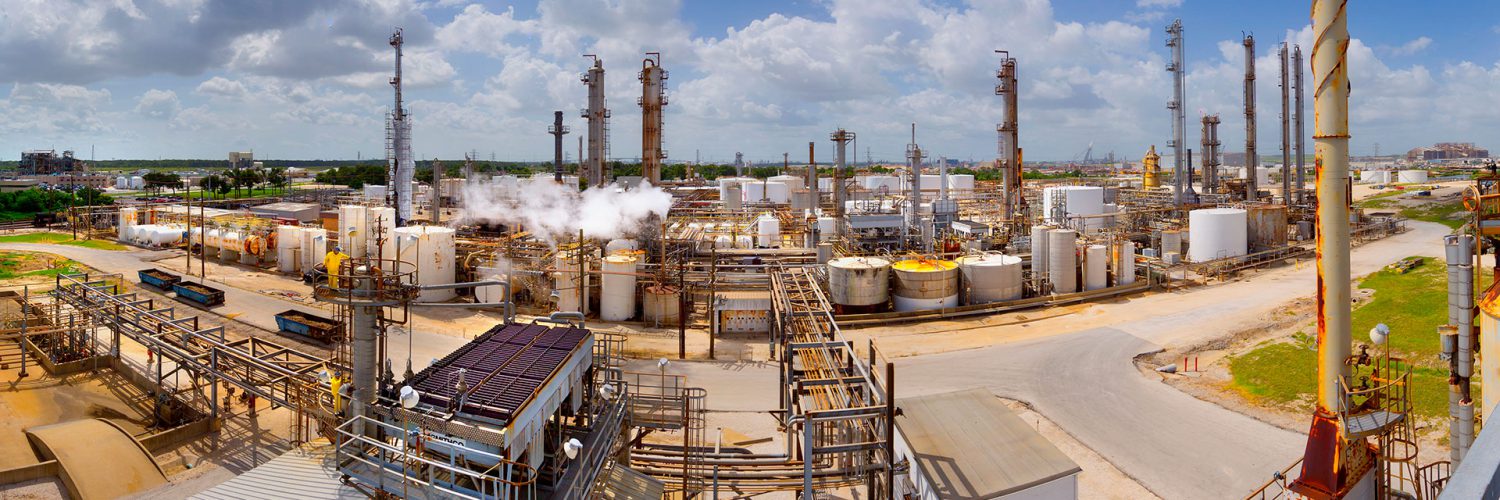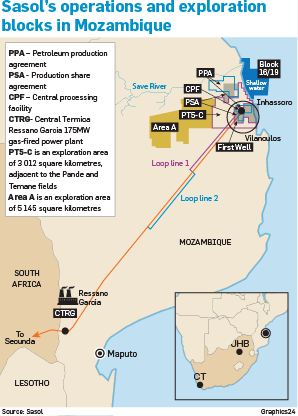South Africa is being urged to accelerate its response to a looming
natural gas “supply cliff”, which could arise in the coming four to five years
unless alternative sources of supply are found to offset “tapering” imports
from southern Mozambique.
South
Africa remains highly dependent on Sasol’s Pande and Temane production areas,
with the gas used both by the JSE-listed group itself to produce fuel, power
and chemicals in Secunda and Sasolburg, as well as by various industrial
consumers in Gauteng and KwaZulu-Natal.Although Sasol is currently exploring
for additional gas in southern Mozambique, supply is currently scheduled to
begin falling from 2023 onwards and the Industrial Gas Users Association of
Southern Africa (IGUA-SA) is forecasting a yearly shortfall of 98-million
gigajoules from 2025 onwards.The IGUA-SA has acknowledged that the pace of the
decline may be delayed by a few years as a result of proposed investments by
Sasol in Mozambique. Nevertheless, additional sources would still be required
not only to replace dwindling Mozambican supply, but also to meet any new
industrial demand.
PwC
director capital projects and infrastructure James Mackay warns that South
Africa currently lacks both the policy and the implementation plan to avoid, or
mitigate, the potential shortfall. Speaking at the release of the latest PwC
Africa oil & gas review, Mackay said that, although significant volumes of
gas would become available in the region as the liquefied natural gas (LNG)
export projects in northern Mozambique came on line, these volumes represented
longer-term supply opportunities that would not be available in time to
alleviate South Africa’s anticipated supply constraints. The impact on the
country’s industrial economy could be significant, given that, besides Sasol,
downstream gas industries employ some 45 000 people and produce R150-billion of
economic value yearly. “Speed is more important than ever,” Mackay argued,
indicating that all the supply options available to South Africa could take up
to five years to implement, including the importation of LNG, which is viewed
by PwC as the most feasible near-term solution. Mackay believes that an LNG
import terminal at the Port of Richards Bay, in KwaZulu-Natal, represents the
“lowest-cost and least-regret” option for augmenting South Africa’s gas supply
by the mid-2020s.
 He
is more sceptical, however, about the commercial viability of developing the
first LNG import terminal at the Coega Industrial Development Zone, in the
Eastern Cape, which has been held up as government’s preferred location. Unlike
Richards Bay, which has potential to immediately connect into established
pipeline infrastructure linking KwaZulu-Natal with the industrial heartland of
Gauteng, Coega is relatively isolated from areas of demand. Logistically, the
LNG would have to be transported by either road or rail inland, before being
re-gassed. This is likely to be far less cost-effective when compared with a
solution that uses an existing pipeline network and is aligned to a sizeable
market that will justify the initial terminal investment.
He
is more sceptical, however, about the commercial viability of developing the
first LNG import terminal at the Coega Industrial Development Zone, in the
Eastern Cape, which has been held up as government’s preferred location. Unlike
Richards Bay, which has potential to immediately connect into established
pipeline infrastructure linking KwaZulu-Natal with the industrial heartland of
Gauteng, Coega is relatively isolated from areas of demand. Logistically, the
LNG would have to be transported by either road or rail inland, before being
re-gassed. This is likely to be far less cost-effective when compared with a
solution that uses an existing pipeline network and is aligned to a sizeable
market that will justify the initial terminal investment.
Likewise
the IGUA-SA has argued that the Coega option “would be of no consequence to the
current user base”. In the longer-term, the development of domestic and
regional resources, including the recently discovered Brulpadda resource off
the south coast and those set to arise from northern Mozambique, could offer
supply-side relief. The massive finds in northern Mozambique, the PwC reviews
states, have already resulted in LNG project developments worth a combined
$54-billion and have the potential to turn South Africa’s impoverished
neighbour into the world’s third-largest LNG exporter. Neither of these options
would be on line in time to counteract the envisaged drop in supply from
southern Mozambique through the Rompco pipeline to South Africa. Mackay argues
that, unless a coherent solution is urgently found as to when and how the gas
shortfall will be met, and by who, there is a genuine risk that a significant
portion of South Africa’s industrial base, including companies such as Columbus
Stainless, Consol Glass, Hulamin and Nampak will be “left stranded”.
 State-owned
logistics group Transnet has, together with the International Finance
Corporation, initiated a feasibility study into the development, by 2024, of an
LNG storage and regasification terminal at the Port of Richards Bay.
Nevertheless, no solution has been finalised and no procurement programme
initiated. The Cabinet-approved Integrated Resource Plan 2019 (IRP 2019) has
also not increased certainty, as it has reduced the demand for gas as a source
for electricity to 2030, making the gas-to-power programme an unlikely anchor
for the scale of gas imports required.The IRP 2019 has reduced the gas-to-power
component to 3 000 MW by 2030, from the 5 100 MW outlined in the draft IRP
2018, with the bulk of that capacity expected to arise from the conversion of
the diesel-fuelled peaking plant to gas over the coming ten years. “The gas
volumes left in the IRP are not enough to anchor the gas infrastructure
envisaged. So, we have to look more broadly than the IRP as to how to get over
this gas crunch. But at the moment, there is no policy certainty with regards
to who will do it, how it will be done and which port will be prioritised.”That
said, Mackay is heartened by recent moves by the Department of Trade, Industry
and Competition to intervene on the issue and expressed some optimism that a
national gas strategy could begin to emerge as a result of that intervention.
State-owned
logistics group Transnet has, together with the International Finance
Corporation, initiated a feasibility study into the development, by 2024, of an
LNG storage and regasification terminal at the Port of Richards Bay.
Nevertheless, no solution has been finalised and no procurement programme
initiated. The Cabinet-approved Integrated Resource Plan 2019 (IRP 2019) has
also not increased certainty, as it has reduced the demand for gas as a source
for electricity to 2030, making the gas-to-power programme an unlikely anchor
for the scale of gas imports required.The IRP 2019 has reduced the gas-to-power
component to 3 000 MW by 2030, from the 5 100 MW outlined in the draft IRP
2018, with the bulk of that capacity expected to arise from the conversion of
the diesel-fuelled peaking plant to gas over the coming ten years. “The gas
volumes left in the IRP are not enough to anchor the gas infrastructure
envisaged. So, we have to look more broadly than the IRP as to how to get over
this gas crunch. But at the moment, there is no policy certainty with regards
to who will do it, how it will be done and which port will be prioritised.”That
said, Mackay is heartened by recent moves by the Department of Trade, Industry
and Competition to intervene on the issue and expressed some optimism that a
national gas strategy could begin to emerge as a result of that intervention.
0 comentários:
Post a Comment